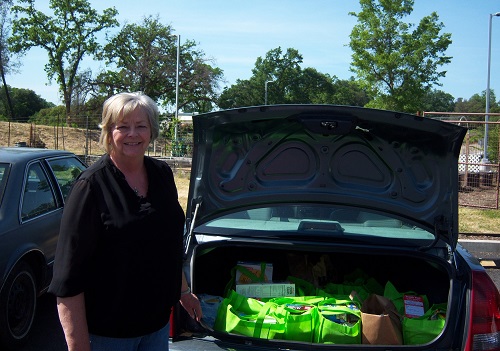Need Better Quality Food Donations? Try a Donor Drive
April 12, 2017
We do not offer food. Here’s where you can find food.
No distribuimos alimentos. Encuentre comida gratis aquí.
我們不直接提供食物,但我們能幫助您找尋食物。

 Food bank staff–and the people they serve–know that hunger is a problem year round. However, the issue mainly falls into the limelight around the holidays, with food drives revving up before Thanksgiving and through Christmas. That attention can dissipate the other nine to ten months of the year, while the need remains strong.
Food bank staff–and the people they serve–know that hunger is a problem year round. However, the issue mainly falls into the limelight around the holidays, with food drives revving up before Thanksgiving and through Christmas. That attention can dissipate the other nine to ten months of the year, while the need remains strong.
In addition, well-intentioned barrel collections can result in piles of expired cans of soup and strange items, like alligator meat and road kill stew, that were gathering dust in people’s pantries rather than much-needed protein in the form of canned tuna or chicken, peanut butter, and beans. So what’s a food bank to do to ensure consistent quantity and quality of donated food?
In 2009, the Ashland Emergency Food Bank in Oregon came up with a crazy notion: focus on a donor drive instead of a food drive. Enlist neighbors who commit to purchasing extra non-perishable items during each trip to the grocery store, then place them in the provided bags to be collected by volunteers every other month. The Ashland Food Project went from 600 pounds that first pick-up day to almost 26,000 pounds during the most recent one. This success inspired similar projects across the country.
In Tuolumne County, two retired teachers began the Motherlode Food Project in 2012. Since then, they have overseen more than 140,000 pounds of donated food. Today 300+ Tuolumne County residents participate in helping their community members, and their donations comprise about half of those that come into the Amador-Tuolumne Community Action Agency. This project allows an assortment of food for the pantries that might not be available otherwise, especially as a remote and rural food bank.
Motivated by the Motherlode Food Project’s achievements, the Resource Connection Center established the Calaveras Food Project in 2014. Partner leaders recruit friends, family members, co-workers, etc. to create a group dedicated to feeding their community. After the initial “cleaning out the cupboard” effect, food bank staff noted that quality increases noticeably and product waste decreases. Clients appreciate the variety, and donors gain a sense of satisfaction at regularly aiding their neighbors.
What are some of the keys to success?
The food bank manager, Tina Mather, stated, “Keeping in touch with donors, who like to know that their donations are making a difference in their communities. I have also found that when you give your donors the number of pounds donated (monthly and cumulatively) they become competitive! They try to match or increase their total each donation cycle, and if there are groups that know one another, they try to beat each other’s donation.”

Lynn Darmsted, Partnership Leader since May 2014, dropping off her group’s donation
Flexibility and convenience are also important components to the projects. Making it easy for people to donate helps guarantee that they will keep doing so. If you are interested in implementing a similar project, here is more information about how it works.
Written by Farley Walker, Communications and Development Associate